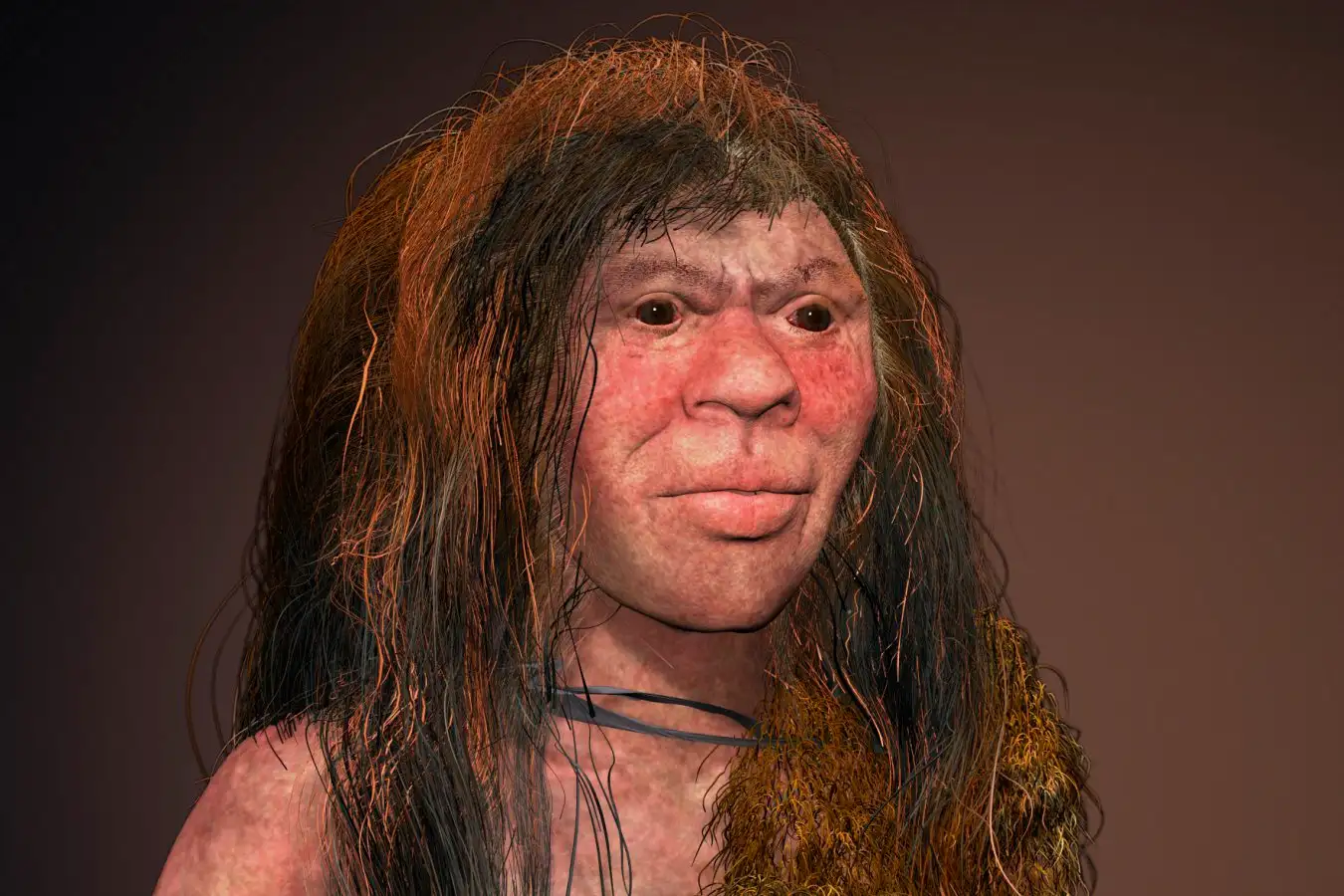
Illustration of a teenage girl who is the offspring of a Neanderthal mother and Denisovan father
JOHN BAVARO FINE ART/SCIENCE PHOTO LIBRARY
For only the second time, researchers have obtained the full genome of a Denisovan, a group of ancient humans who lived in Asia. The DNA was extracted from a single 200,000-year-old tooth found in a Siberian cave.
The genome reveals that there were at least three populations of Denisovans, with different histories. It also shows that early Denisovans interbred with an unidentified group of ancient humans – and with a hitherto-unknown population of Neanderthals.
“This is a bombshell paper,” says David Reich at Harvard University.
“This study really expanded my understanding of the universe of the Denisovans,” says Samantha Brown at the National Research Center on Human Evolution in Spain.
Denisovans were the first ancient humans to be described using just DNA. A sliver of finger bone from Denisova cave in Siberia held DNA unlike that of either modern humans or the Neanderthals from western Eurasia. The genome revealed that Denisovans interbred with modern humans: people in South-East Asia, including the Philippines and Papua New Guinea, carry Denisovan DNA.
Since the initial reports in 2010, researchers have identified a handful of other Denisovans, all from East Asia. In June, a skull from Harbin, China, was identified as a Denisovan using molecular evidence, revealing for the first time what a Denisovan face looked like. However, while several specimens have yielded fragments of DNA, the original specimen has been the only one to yield a high-quality genome.
Researchers led by Stéphane Peyrégne at the Max Planck Institute for Evolutionary Anthropology in Germany have now added a second. (Peyrégne declined to be interviewed because the study hasn’t yet been peer-reviewed.)
The team found a single molar tooth, belonging to a male Denisovan, in Denisova cave in 2020 and sequenced an entire genome from the preserved DNA.
Based on the number of mutations in the genome and comparisons to other ancient humans, the team estimated that the individual lived about 205,000 years ago. In line with this, the sediments in which the tooth was found were dated to 170,000-200,000 years ago. In contrast, the other high-quality genome is from a Denisovan who lived 55,000-75,000 years ago, meaning that the new genome reveals a much earlier stage of Denisovan history.
Based on comparisons with other remains from Denisova cave, the team says there seem to have been at least three discrete Denisovan populations. The oldest group included the male whose tooth was analysed. A second group replaced this older population at Denisova cave, thousands of years later.
“Understanding how early Denisovans were replaced by later Denisovans highlights a significant human event,” says Qiaomei Fu at the Institute of Vertebrate Paleontology and Paleoanthropology in China.
The third group, not represented at the cave, interbred with modern humans, based on DNA testing. In other words, all the Denisovan DNA in modern humans comes from a population of Denisovans that we know little or nothing about.
The new genome reveals that Denisovans repeatedly interbred with Neanderthals, who sometimes lived in or near Denisova cave. Crucially, the genome includes traces of a Neanderthal population that lived 7000-13,000 years before the male Denisovan. These traces don’t match any known Neanderthal genome, suggesting the Denisovans interbred with a Neanderthal group that has not yet been sequenced.
The Denisovans also seem to have interbred with an unidentified group of ancient humans, one that had evolved independently of Denisovans and modern humans for hundreds of thousands of years. One possibility is Homo erectus, which, based on current knowledge, was the first hominin to migrate outside of Africa, living as far afield as Java, Indonesia. However, no DNA has yet been recovered from H. erectus, so we can’t be sure.
“It’s endlessly fascinating that we keep discovering these new populations,” says Brown.
Topics:
Source link : https://www.newscientist.com/article/2502409-denisovans-may-have-interbred-with-mysterious-group-of-ancient-humans/?utm_campaign=RSS%7CNSNS&utm_source=NSNS&utm_medium=RSS&utm_content=home
Author :
Publish date : 2025-10-31 15:13:00
Copyright for syndicated content belongs to the linked Source.